The RCZ, since it came out, first as a concept, then as a production car, is a car that we have always liked aesthetically. But from almost the first day we asked for a radical and cutting-edge version to pull up the range. This Gallic rival of the Audi TT was born with versions that did not exceed 200 horses, and had it complicated in that sense to stand up to its rivals.
With a coupe market in free fall, and with Peugeot redesigning its strategy under Carlos Tavares to reduce the range of models and focus on making money, the RCZ seems to have its days numbered, but this last hurrah that represents the RCZ-R seeks to become a halo car, a sample of the capabilities of the company. A farewell in style to a sports car that we could see through the eyes, but that lacked "spice and spice" to make us fall in love with it.
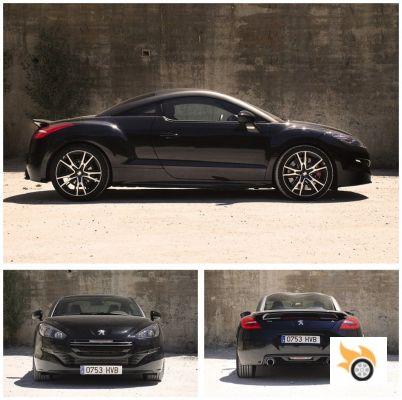
The RCZ seems to have no plans for a replacement in Tavares' mind, so this RCZ-R could be the model's swan song.
After losing 7,000 million euros in two years, and with thousands of employees laid off and factory closures looming, PSA decided to kill a lot of investments in sports programs. Thus, Peugeot Sport went from being facing Audi at Le Mans at a rate of more than 50 million euros per year of budget, to be almost without tasks. The racing department didn't want to lay people off, as the human capital and know-how were too valuable to give away to other brands, but they were partially vacated.
On the one hand, they were tasked with creating what would become Sebastien Loeb's 208 Pikes Peak, which shattered the record for the world's most famous hill climb. On the other hand they were entrusted with the 208 FE project, an ultra-efficient utility car without sacrificing performance, and also to maintain the race-customer projects with the 208 R5 (now known as the T16).
But among all these projects, the most important for the French brand's clientele was undoubtedly the RCZ-R. Why? Because it allowed them to put their hand, with all their know-how, in a road car, to show that the Peugeot of rabidly dynamic cars still exists, although the firm focuses its generalist products in the so in vogue "good in everything, spectacular in nothing".
Design
Aesthetically it belongs to the already surpassed Peugeot's baroque period, but it is undoubtedly the car that best synthesized it, with total success in details and proportions.
We can't talk much about the RCZ-R's aesthetics, because you already know this car well enough. The feline front end with a 308 face belongs to a bygone era in Peugeot's design school, which has now decided to change to a much more functional and neutral design. The side view is dominated by the bulging wheel arches, very marked and muscular, organic.
Between them, a styling line joins them at the bottom, wedged forward to emphasize dynamism. The waistline is almost horizontal, with a large hip on the rear wheel arch. It is the roof that gives character in this vision, with two perfect curved arches. As the design chosen by the designers did not allow for two rear passengers, two Zagato-style "bubbles" serve to increase headroom, improve aerodynamics, and give another point of Gallic baroque to the stamp.
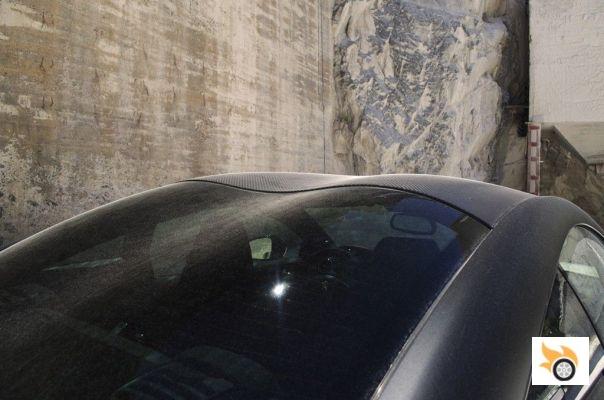
The rear is simple, and very Peugeot. And then there are all the details that add the "R" of "racing". The front has black Xenon headlights (directional), with no chrome on the inside. The roof is made of genuine carbon fiber as standard. The rims are a generous 18 inches, with its own design, and very successful.
Behind them hide powerful Alcon brakes with rigid calipers and bicomponent floating discs, with ventilated steel discs and aluminium hood. The rear is dominated by two large exhaust tails and a spoiler, also generous, and with great work in terms of sticking the rear to the asphalt at high speed.
Cabin
Entering the car is to find the familiar cabin of the 308 that has already stopped selling, but with some special touches for the occasion. Although years ago, when the car arrived on the market, it was a good car, and the design is still successful, there are contrasts in the execution.
The interior is practically the same as the 308 that is no longer sold, but the seats and the driving position take us to a racing environment.
The dashboard is covered in leather, with red stitching, and it looks and feels good. But then there's the feel of certain controls, which are not up to the standard of an Audi TT or BMW Z4, to give two examples. I'm referring to the feel of the climate controls, the turn signal levers... which in their performance "sound and look" cheaper than you'd expect in a car of this price and level.
What is great is the seat you sit in. Comfortable, grippy in all the areas that matter, including between the calves and shoulders. The aluminium gear lever is the same as the 208 GTI, and it has the same problem: it's well designed, nice to touch, but it's very cold in winter, and if you leave the car in the sun, it'll scorch you.
The infotainment system also shows its time, and its handling is not intuitive at all. The steering wheel has smaller dimensions, to be more pleasant to hold even though it's still a bit too big for a sports car, and the truth is that it stays where we want it, just like the pedals. It's a car in which you quickly find the ideal driving position, with straight legs and steering wheel at the right distance and inclination.
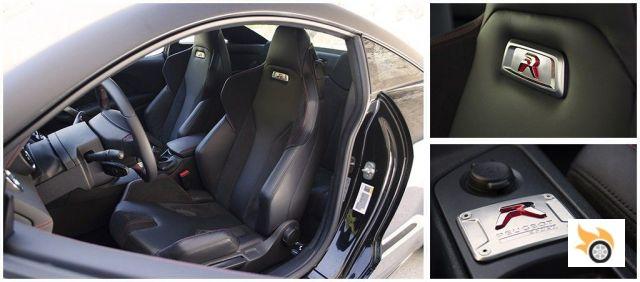
The controls for radio and cruise control belong to another era... they're the same as the Peugeot 206! and are hidden behind the steering wheel, making them difficult for the novice to operate. Those of us who have had Peugeots in the past feel at home in this car, but of course that's not what this is about...
The front seats are spacious. In the back any adult will hit the moon on the head. They are testimonial seats to carry small children (with a cap, or they will suffer an imminent sunstroke), or to leave luggage that won't fit in the otherwise epically spacious boot.
All in all, don't be fooled, even if I have my faults, it's a nice car to sit in. It's just that time doesn't pass in vain, and for similar money, alternatives from other brands offer "something more".
Technique
But let's forget about interior complaints. The technique is what it's all about now. Like every RCZ, it's based on the platform of a Peugeot 308, which isn't the best way to achieve a perfect recipe. But of course, when the people who win world rallies and Le Mans get their hands on it, things change.
The monocoque is rigid, and is based on McPherson struts at the front and a torsional axle with arms pulled at the rear, which is not "the best of the best" to manage the tread of the wheels.
The mechanicals may only be 1.6 litres, but the engine has all sorts of fancy tricks to deliver more than 270 horsepower, and best of all, it's digested by a front Torsen differential.
Peugeot Sport has worked on springs and shock absorbers, to opt for rigid settings, but above all, with excellent damping control. Stabilizers are stiffened, gaining diameter, and silentblocks are also modified. The brakes are Alcon, similar to those used in rallies, as we said above, and are "bombproof", as well as particularly light.
The mechanical heart is the 1.6 THP co-developed with BMW at first, and taken to some truly incredible power limits: 271 horsepower no less. To get such specific power, Peugeot Sport has worked on the supercharging, on the manifolds, reinforced the block, touched pistons, distribution management (remember, variable in intake and exhaust, and with variable valve lift in intake) ... Come on, everything that can be done to this direct injection to deliver such specific power.

Seeing its torque and power curve, everything takes on a particularly important dimension. And it is an engine full from very low, and capable of stretching to quite high, for a supercharged engine of this type.
Passing torque and power to just two-wheel drive in a case like this can be tricky. Peugeot Sport hasn't messed around with this, and has boxed the six-speed manual gearbox with a Torsen limited slip differential that actively distributes torque to the most ideal wheel in each corner.
And with all this recipe book... what is the result on the road?
The same fast mountain pass as always is the first contact to get us out of our doubts. The first thing that catches my attention is the engine delivery. Full from very low revs, it offers a constant thrust, without an epic kick "eruption" zone. It is a very powerful engine, it seems much larger displacement, and stretches eagerly to the cut, but at the same time it is a dosable engine, manageable with an accelerator pedal that is not an "all or nothing", and without having to play too much with the gear lever to place it in good thrust zone.
In straight and slight curves "all-out" I'm chaining gears. Unlike many other Peugeots, the gearshift is very precise and precise in its settings. As Dani commented in his day, it's a bit long to reach each gear, but it's a "minor" evil to which one quickly gets used to.
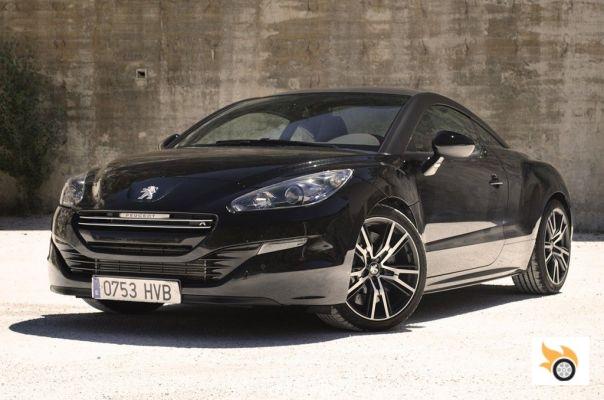
The front end is its best feature: it bites into corners without hesitation, there is no pitching and hardly any roll.
First serious curves chained together. Foot on the brake, and quickly we find a hard pedal feel. Not the hardest in the universe, but firm enough to perfectly manage the bite of the Alcon while converting kinetic energy into heat. The back of my right foot looks for the throttle to execute the toe-tap, and... surprise: on this Peugeot the throttle falls exactly where I want it. Despite sharing the same bottom bracket with the 208 GTI (and if they don't share it, it's almost the same), as the brake pedal has much less travel and goes lower, there's no exaggerated distance between pedals, which allows you to make book heel toes, while I shift down from fifth to third gear first in the right-hand corner, and downshift to second for the quick change of direction to the left.
I put the steering wheel, small in diameter and very manageable, and the car, with hardly any sway or flicker, heads for the apex of the corner. The steering is direct, precise. A love. The car pulls to the apex, as I said, and there, while traveling supported mainly on the left wheels, you have to brake hard and give the second toe heel to face the right curve. It's a delicate moment, when you have to do several things at once, with order and discipline, and trusting that the car doesn't take too long to change the support, without stampeding from behind when playing with the masses.
The RCZ-R surprises. On the positive side. It accepts braking in hard cornering without flinching, I remove the gear and change direction with little sway. The rear follows orders with precision, and more importantly, in a situation of so much work for the front wheels, they manage to find bite on the asphalt. There's no pitch, no roll, and above all, no understeer. But the best is yet to come.
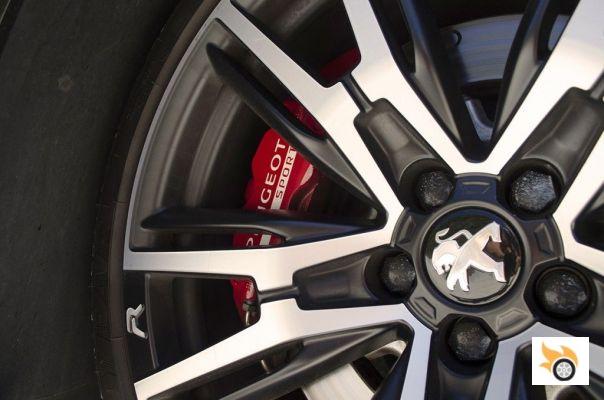
Second corner, the car very supported, long left curve, as I say, and the car is working when it's time to accelerate. I give gas progressively first to keep the pace, and as I see the exit I start to give more and more abruptly. Here, especially with this kind of power, it doesn't matter if you have a self-locking emulator like XDS, TTC or whatever the brands want to call it, because in the end, either you ease off the throttle, or you lose the line with understeer due to power.
But no. This is where the self-locking differential especially comes into play. You've read me clamouring for real self-locking differentials in front-wheel drive cars - test yes, test yes, and test yes. And the RCZ-R is the perfect demonstration of why they should be fitted.
When you unload all the power, the Torsen does its job, sends more torque to the outside wheel and the car tightens the line, turns more, and rounds the curve in front allowing you to take advantage of all the power available.
No, it's not a mirage. You have to know how to drive with a front lock, I admit it. Those of us who have driven such devices in rally cars or other models (Focus RS) already have that advantage, but if you're a neophyte, it will take you four or five corners to learn that, when it looks like you're going to lose the nose in acceleration at the exit of the corner, what you have to do is give it gas, hold the steering wheel in the line you want, and enjoy how the car closes the trajectory.
The self-locking differential is, in any case, the absolute protagonist of this car, and the key that has made us fall in love with it.
Not only does the RCZ-R do this, but it also copes perfectly with almost all of the shortcomings of this type of device. I remember the Focus RS MK2, and its parasitic effects on the steering. And when the Quaife differential (very similar to a Torsen) came into action, the steering wheel came to life, and you had to be correcting the line, not to stick too close to the apex, or even to prevent the car from looking for traction in a straight line when the asphalt was not in perfect condition.
The guys at Peugeot Sport have managed to eliminate perhaps 90% of those parasitic effects associated with the lock-up, and while it's still necessary to get a good grip on the steering wheel when you're tickling for support, this RCZ-R is much, much easier to drive without it getting out of whack. Also, the lock-up hardly interacts at all under braking on corner entry.
Some ability to unsettle the rear has been sacrificed in that regard in favor of a car with a butt that goes where the incisive front steering dictates. So, fiddling with throttle load changes to slide the rear is not viable on a mountain pass, however fast it is (Dani told us that at Jarama it was possible to do something by playing with inertia, but it's not viable in the world of two-lane roads).
Is this a complaint? Not at all. There's nothing wrong with the fact that the rear is not one of the hyper-locatable ones of the 205 and 306. It's not because it's a completely addictive car in the corner to corner, that transmits positivism, that attacks the curves with decision. It's one of those cars that you fall in love with because of a completely reliable front end, that sets the pace, and a chassis that, having a suspension that handles pitch and roll perfectly, allows you to feel the road and not have the sensation of "going on a boat".
Unfortunately, after a few kilometers at "rhythm", with hard braking and cornering, the car starts to vibrate at every braking. The discs of the test unit are warped (someone must have washed the car with cold water after having been on the road, and they were ruined). In cases of floating discs with bells made of a different material than the disc itself, these things usually happen, but the fact is that, with the power they have, we were sorry to be left with them overheated and have to slow down the pace to recover their natural bite. In any case, don't be alarmed: it was a specific problem of this unit, as the RCZ-Rs tested at Jarama by Dani didn't have this problem.
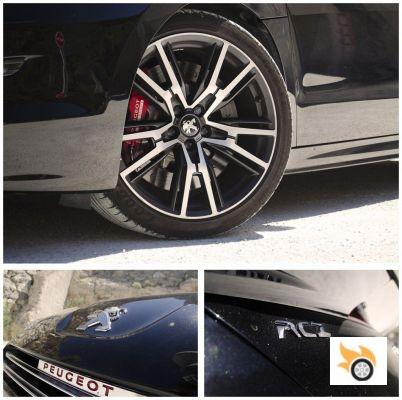
It may lack some rear "adjustability", or some information on the steering wheel, but it is quasi-perfect, and we wouldn't change a thing about its recipe.
Talking about the suspension, is it too hard? It's at that point of firmness that some people will start to get tired of. For attacking mountain passes it's perfect. You can go fast with it, and it doesn't dislocate trajectories even with big bumps and expansion joints in the middle of the road. But the bumps of the road, in a daily use, do become a bit hard.
And that brings us to the conventional use of the car. To drive miles on the road on a trip or on vacation, it is a perfect car for two people, not for more. It does not spend much fuel, thanks to its small 1.6, capable of averaging seven liters and something every 100 kilometers. It's fast, for overtaking and for maintaining completely and utterly illegal cruising, and the sound system and air conditioning provide a more than adequate atmosphere so that the weather doesn't take too much of a toll on you. You even know you can fit three weeks' worth of luggage.
If you're heading into town, you'll still be surprised at how little it wastes. Visibility isn't bad in any direction, although you have to watch your hips through the mirrors to avoid touching them when parking in tight spaces. The suspension, in this sense, is even more surprising. And is that the French of PSA have always been geniuses in the tuning of shock absorbers, and this is not a different case, as it is a car that, even going hard, passes speed bumps without bouncing, and without rubbing low.
Of course, if it were a car for everything, and it was the only car at home, it would probably not be superfluous to have two suspension programs and variable dampers, but the compromise it has is so successful that I do not consider it indispensable.
Conclusions and competence
I didn't expect to fall in love with the RCZ-R. I especially didn't expect it to be as dynamic as it is. But it has managed it. It's a car that in the curve to curve of a mountain pass shows how a front-wheel drive sports car has to be, with almost perfect body control, cornering, driveability and steering response (yes, it lacks some feedback through the steering wheel rim... like all of its generation).
If you ask me to compare it with the competition, we have the problem that its most direct rival is in full renovation phase the TT-S that is still sold in dealerships is more effective, thanks to its all-wheel drive, something more comfortable for day to day, and has a better finished interior. But dynamically it's nowhere near the RCZ-R in entertainment. The Peugeot gives "sopas con ondas" to the Ingolstadt car, which wins in sensations, in driver information, in a positive front end, which wants to register in the curves, in the transitions acceleration-braking and left turn to right turn.
An Audi TT-S is probably more effective, but the RCZ-R is more fun to drive.
Maybe the thing will change with the new TT-S, but for that we will have to test it before. It's also worth remembering that the Peugeot is considerably cheaper.
If you're already looking for other rivals, it's difficult to find something really similar. A Z4 has almost nothing to do, a GT86 is a much slower car with a tuning that has nothing to do, designed for drifting, and a Nissan 370Z is a car that does not have the ability to "throw lines" of the Peugeot, to go fine along the line, being a car more for drifting, with a front axle that does not provide the sensations that the Peugeot does.
What's the moral of the story? Peugeot Sport has some geniuses. They have taken a car that, although we liked it aesthetically, was not a real sports car, and have managed to create an addictive machine, which likes the curve to curve. If you are someone who enjoys sports cars with an incisive front end, with power, and it is within your means, I would recommend it over some of its rivals. Only if, stretching a little further, you were to catch up with a Porsche Cayman, things would change... And that's because the Porsche is... "the Porsche".
Note to manufacturers: Someone should start to realise that, with a self-blocker and a good set-up, you can make some real front-wheel-drive wonders from time to time. Why don't we see more cars tuned like this? Only Megane RS and Focus RS (which is too much of a donkey for many) have managed to be this communicative and positive, until the RCZ-R... Although I'd still stick with a Focus RS MK2 for brute, or a Megane RS for rear agility, I reckon an RCZ-R would be a perfect addition to my garage. My respects to the guys at Peugeot Sport.
Rescued report, originally published in June 2014.
























